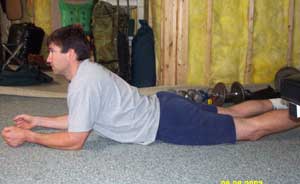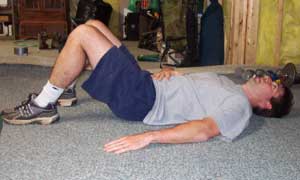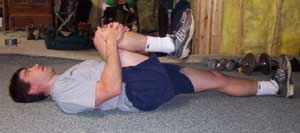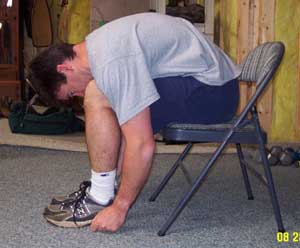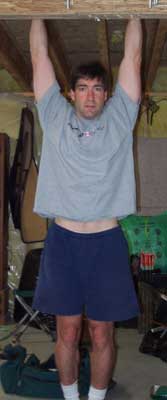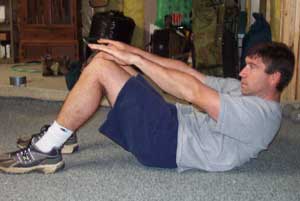Bowsite.com
The Nation's Leading Bowhunting Website
In the second part of this series we will look at how to take care of your back after you injure it. Lets assume that yesterday you were helping lift your partner’s buck into the back of his truck. It was a big deer and you both were pretty pumped and you just heaved it into the truck using your back instead of your legs. This morning it is very painful to get out of bed and you have significant low back pain. The first step is to assess your symptoms to see if you need to seek immediate medical care. If you have numbness or weakness in your legs or difficulty urinating you need to see your doctor immediately. These are symptoms suggestive of a herniated disc and you may need to have an MRI or even emergent surgery. If you have a
fever you should also see your physician to rule out an infectious source of the pain. More commonly, the pain will be localized in your lower back and you may even feel spasms in the lower back muscles. It may be painful to walk but your legs shouldn’t feel weak. In this type of situation you do not need to seek immediate medical care unless the pain is uncontrollable with over- the- counter medications. X-rays are usually not helpful and are not indicated. A chiropractor helps some people with muscular back pain and may be worth a try. If the pain is from a muscle strain there are some techniques you can use to regain function and quickly become pain free. The first step is to rest your back for a couple days. This may be difficult in the middle of the rut but you need to allow the muscles a chance to heal a bit and for the spasms to subside. Most commonly two or three days will be enough. Doctors used to recommend strict bed rest for up to a week. This is no longer the case. I will usually recommend rest and a small amount of walking during the first two or three days. Maybe out to get the mail or a couple laps in the backyard. Over the first 3 days you should increase the amount you walk each day. Walking has been shown to be the quickest way to rehab your back. You need to start on flat smooth surfaces. Hiking through the swamp to your treestand or up a mountain to chase mulies will not help. In fact, jarring movements or a fall can put you back to stage one. It is very important not to over do it in the first couple days or you can prolong your recovery. Once you are able to walk with little or no pain you can add in back exercises and gradually increase activity. You can sleep wherever you are most comfortable. If a firm surface like the floor feels best then that is fine, but it is not necessary. If your bed is more comfortable by all means use it. Your back will let you know where you need to sleep. Some simple exercises will stretch and strengthen your back. They will help your muscles heal properly and more importantly prevent future injuries. They are easy to do and can be done in less than 10 minutes a day. When you can do a set of the exercises with minimal pain it is reasonable to hit the woods again. For most people this should be within a week or less. The key is early walking and using the exercises by about day three or four. As you start to hunt again take it very easy. This may be the time to try your ground blind instead of climbing into your stand. Minimize time in any one position. You may want to sit for 1 hour then stand for an hour. You can even do back stretches while on stand. If you are lucky enough to take a deer you should not drag the deer out. This is the time to call on a buddy and get some help. A wheeled cart can minimize back strain and is probably a good investment for most of us. It transfers the work from your low back to your legs, which are much better adapted to handling the load. Lets look at each of the exercises now. We will put them in order from easiest to most difficult. This is the order that you begin doing them after an injury.
These exercises are a great starting point and will go along way toward rehabilitating your back. Just as important is overall conditioning. Many studies have shown that aerobic exercise can prevent back pain. The key is to choose your exercises carefully. Running may not be the best choice. The pounding of constant running can be tough on your back. Better choices include walking, biking swimming and water aerobics. Any of these activities can improve your aerobic fitness with less strain on your back. If running is your thing make sure you have good shoes and pick a soft surface to run on. Asphalt is not the best option.Hopefully with these exercises and a good conditioning program you can quickly rehabilitate your back and prevent future injuries. |


